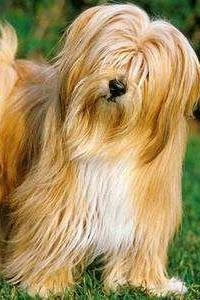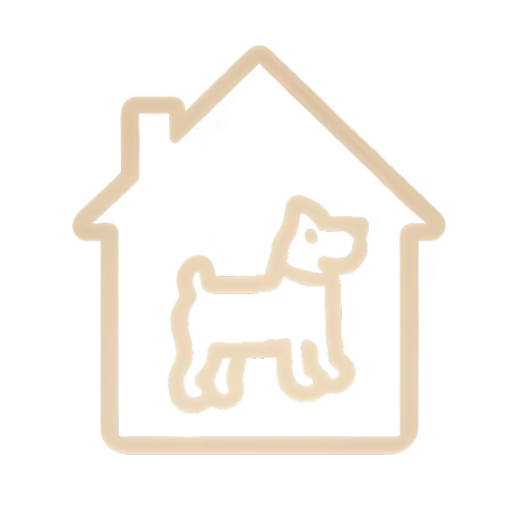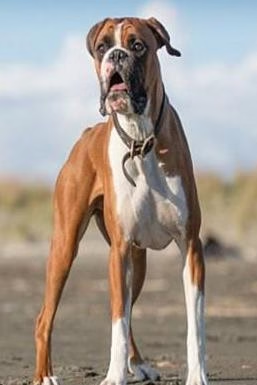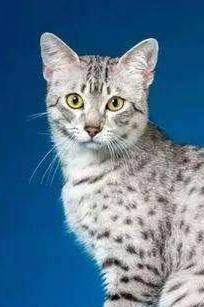Tibetan Terrier (Tibetan Dog)

Tibetan Terrier
Tibetan Dog
Basic Information
- Category: Pet Dog
- Origin: China
- Body Type: Medium
- Height: 33-41cm
- Hair Length: Long-haired
- Lifespan: 10-15 years
Ratings
| Trainability | ⭐️⭐️⭐️⭐️ |
| Affection Level | ⭐️⭐️ |
| Barking Level | ⭐️⭐️⭐️ |
| Shedding Level | ⭐️⭐️⭐️⭐️ |
Breed Introduction
The Tibetan Terrier is not a true terrier but rather a shepherd dog, similar to the shaggy-coated shepherds of Europe. Their homeland is the Tibetan Plateau, known as the Roof of the World, at an altitude of 5,000 meters.
In the 1920s, British doctor Agnes Gregor worked in India near Tibet, and a wealthy Tibetan gave her a Tibetan Terrier as a thank you for her superb medical skills. The doctor was deeply attracted to this breed and devoted her life to breeding them, thus establishing the Tibetan Terrier in Europe.
Tibetan Terriers (often referred to as TTS) are sometimes called ‘a big dog in a little dog’s body’ because of their completely opposite personality traits compared to their size, resembling some large breeds. They love to play, have strong athleticism and agility, but can also remain calm and relaxed. They share no connection with other small hunting breeds, but they are termed small terriers due to their size being classified as such in the UK, where dog breeds were introduced to the Western world. The Tibetan Terrier is a lovely companion and an excellent family dog.
The native Tibetan Terriers in China differ significantly from the Tibetan Terriers found abroad today. As the name suggests, the Tibetan Terrier originates from Tibet, where it is said that monks have kept them in monasteries for over 2,000 years. People regard Tibetan Terriers as companion dogs and ‘bring good luck,’ capable of bestowing their luck upon humans. These dogs are never sold, as families believe selling them would bring disaster. Instead, they are given as gifts to show respect to the gods or as a thank you for help and service to people.
In the 1920s, a doctor named Gregor in India cured a sick Tibetan woman, and her grateful husband gifted him a dog. Gregor bred many of these dogs in India, and many of his bred dogs are descendants of these little dogs. Upon returning to England, Dr. Gregor established the famous Lambrell Kennel. The breed was recognized in India in the 1920s and in England in 1937; today, this breed can be found in dog shows worldwide. The Murphys from Virginia introduced the first official Tibetan Terrier to America from the Lambrell kennel in England in 1956. The Lambrell kennel has a dog club in London. From then on, this breed attracted many dog enthusiasts from Canada to Florida and from the East Coast to the West Coast.
The Tibetan Terrier is not a true terrier. It does not have the characteristics of a terrier and is not natural at digging; it is called a terrier because of its resemblance in size. Tibetans refer to it as ‘the bringer of luck’ or ‘sacred dog’; in Tibet, the Tibetan Terrier is neither a guard dog nor a shepherd dog. It is simply regarded as a companion animal, treated like a child. This breed remains pure, as any mismatches are believed to bring misfortune to the home and community. This is a very healthy breed, likely a result of harsh natural selection.
The Tibet Autonomous Region in China is one of the sparsely populated places in the world, with some of the most extreme climate conditions. For instance, Lhasa is extremely cold in winter and can reach 85°F in summer. The Tibetan Terrier can withstand cold storms due to its thick double coat and snowshoe-like feet; its soft facial fur protects its eyes from wind and snow, and the well-furnished foot fur is suitable for walking on hard ground. Surprisingly, in hot and humid summers, they seem unbothered and just take simple naps during the hottest times. Tibetans have made no effort to eliminate any colors from this breed, believing that good health and a happy temperament are much more important than coat color.
The Tibetan Terrier was recognized and registered by the AKC on May 1, 1973, and in the AKC dog show on November 3, 1973, it was classified under the non-sporting group.






